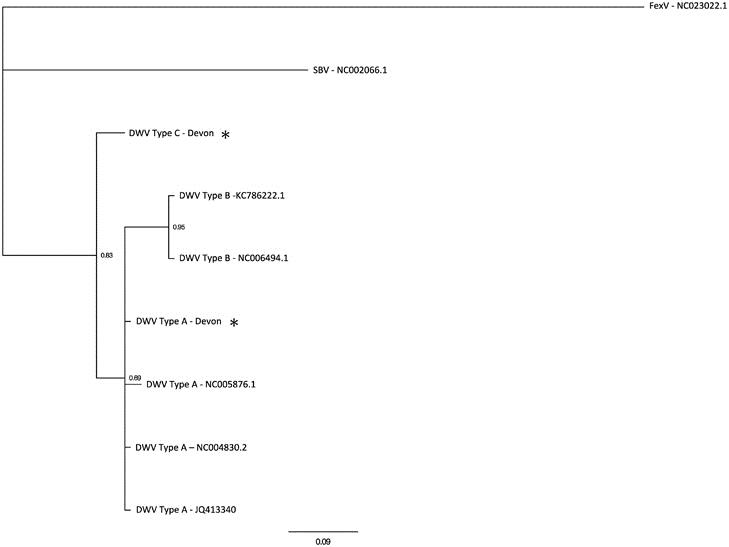Archives – December, 2015
Editor’s Note: Dr. Berenbaum’s complete article is available here. Below is a brief excerpt.
From: PROCEEDINGS OF THE AMERICAN PHILOSOPHICAL SOCIETY | VOL. 158, NO. 3, SEPTEMBER 2014
MAY R. BERENBAUM, Professor and Department Head, Department of Entomology, University of Illinois at Urbana-Champaign
Among the first studies of CCD to be published was one by Diana Cox-Foster and colleagues at Penn State and Columbia, who used a technique called metagenomics to identify new pathogens and parasites (Cox-Foster et al. 2007). Basically, metagenomics is the use of genomic methods to examine entire communities of microbes associated with a particular environment; in the case of Cox-Foster et al. (2007), the environment under study was the body of a honey bee. These investigators found a panoply of pathogens, including one Israeli acute paralysis virus (IAPV) that had never been reported in the United States. These authors identified a strong correlation between the presence of this virus and a diagnosis of CCD. That it was not strictly the causative agent of CCD was suggested by a study published one month later by Chen and Evans (2007), documenting the presence of IAPV in U.S. bees collected in the years before CCD appeared. Nevertheless, pathogens, old and new, encompassing bacteria, fungi, microsporidia, trypanosomes, gregarine protists, amoebae, and almost 20 different viruses, continued to be implicated in CCD specifically and bee decline in general (Evans and Schwarz 2011). In 2009, vanEngelsdorp et al. (2009a) showed that bees with CCD are associated with a heavier pathogen load. . . .
December 14, 2015
From: BlueNotes
Helen Clark
We’ve had an internet of things for a decade and pretty soon we’ll have a big data set of everything, too. Combine those with insects and you get a particularly ambitious and impressive Australian CSIRO-led global project essentially studying the big data of bees. Why? Because they continue to die in record numbers and we still don’t know why.
A mass bee die-off threatens food security and would drive up the costs of many foods considered staples today. The stressors on bee populations across the world are complicated and the CSRIO project aims to untangle them by studying populations en masse, rather than the small-scale experiments largely done up to this point.
December 11, 2015
Editor’s Note: Translation courtesy of CRE. The original post in German is available here.
From: Bienenzuchtverein Sulzbach-Rosenberg 1871 | Bee-keeping Association Sulzbach-Rosenberg 1871
Varroa weather now by postcode
Now you can simply enter the postcode of your Apiary site when retrieving the Varroa weather, and already see the current handling instructions.
Varroa weather by postcode
or inform themselves of treatment options
December 10, 2015
From: The Maitland Mercury
Australia’s first national survey of honey bee viruses has found we have one of the healthiest honey bee (Apis mellifera) populations in the world – a key step in re-establishing and maintaining export markets for breeding stock.
The last survey was conducted almost 30 years ago and only in eastern Australia, and the significant gaps in our knowledge prompted the US to prohibit imports of Australian queens and packaged bees due to fears they could spread unwanted viruses.
Read Complete Article
December 9, 2015
From: Discover
Simple protein allows honeybees to inherit “pathogen patterns” akin to antibodies.
By Leah Shaffer
The honeybee’s immune system has a few tricks up its sleeve — tricks that scientists could soon tap to protect stressed bee populations. Insects don’t produce antibodies, the immune system’s way to remember and arm the body against recurring pathogens. Yet bees somehow pass along pathogen immunity to their young, something that shouldn’t be possible without antibodies.
Read Complete Article (paywall)
December 8, 2015
From: The University of Queensland
Farmers who use pesticides that spare bees but kill other insects might be ignoring important sources of crop pollination, according to an Australian-led international study.
University of Queensland plant ecologist Dr Margie Mayfield said many crops — including mangoes, custard apples, kiwi fruit, coffee and canola — depended on non-bee insect pollinators such as flies, butterflies, moths, beetles, wasps, ants and thrips.
“Scientists haven’t broadly explored the role of non-bee insects in crop pollination,” Dr Mayfield said.
December 7, 2015
From: AG Professional
By LUKE – Natural Resources Institute Finland
Research conducted in Finland on neonicotinoid seed treatment has yielded different results from the studies on which the European Commission’s ban is based. In Finland, the residue levels are so low that they seem to cause no acute harm to bees.
In 2013, the European Commission restricted the use of neonicotinoid products, banning them in the seed treatment of crops favoured by bees, such as oilseed and turnip rape. Neonicotinoids are neurotoxins used as active ingredients in pesticides. The decision was based on the European Food Safety Authority’s (EFSA) risk assessment, according to which neonicotinoid use on crops attractive to bees is harmful to bees and other pollinators.
December 4, 2015
From: Bee Culture

Diversity in a honey bee pathogen: first report of a third master variant of the Deformed Wing Virus quasispecies
Open
Gideon J Mordecai1,2, Lena Wilfert3, Stephen J Martin4, Ian M Jones2 and Declan C Schroeder1
- 1Viral Ecology, Marine Biological Association, Plymouth, UK
- 2School of Biological Sciences, University of Reading, Reading, UK
- 3Centre for Ecology and Conservation, University of Exeter, Penryn Campus, Penryn, UK
- 4School of Environment and Life Sciences, The University of Salford, Manchester, UK
Correspondence: DC Schroeder, Viral Ecology, Marine Biological Association, Citadel Hill, Plymouth PL1 2PB, UK. E-mail: dsch@mba.ac.uk
December 2, 2015
Next page
